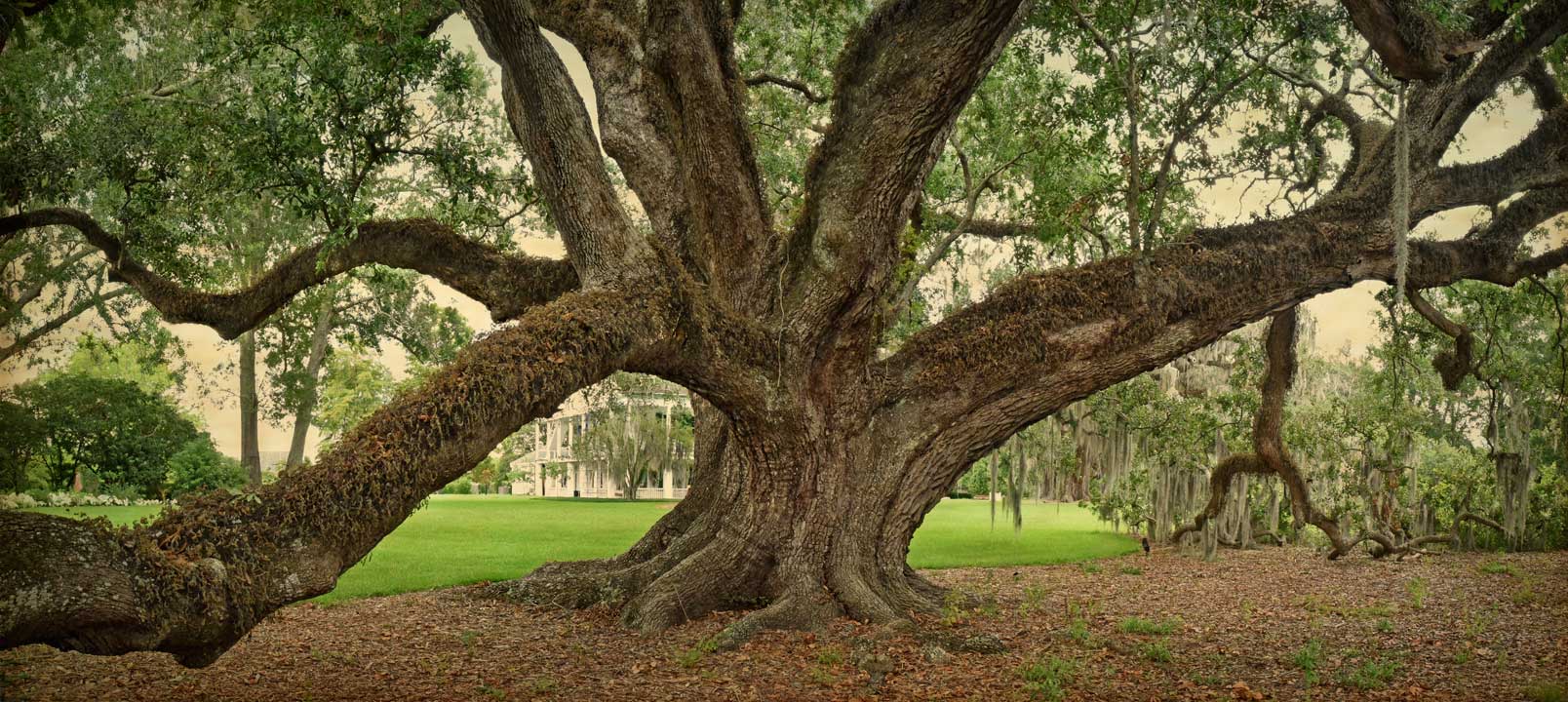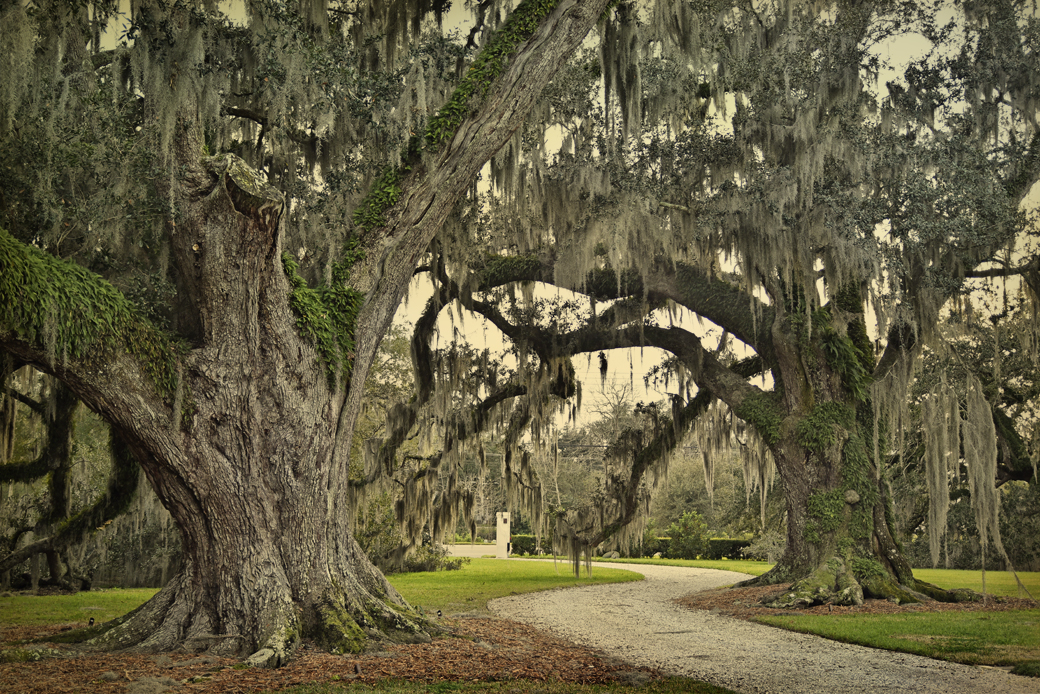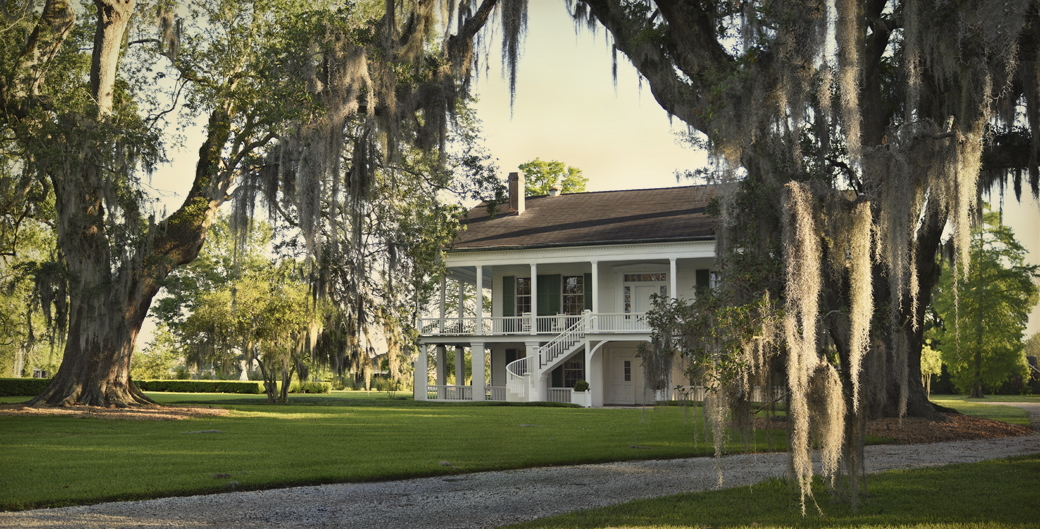(Rienzi Plantation home and historic oaks are located at 215 East Bayou Road [Remember, Highway 308 is called Bayou Road within the Thibodaux city limits]. Rienzi is a private residence and is not open for tours.)
Rienzi Plantation Oaks—Two of the oaks on the grounds at Rienzi are registered with the Live Oak Society and one, named “The Pilgrimage Oak,” is one of the Live Oak Society’s original 43 member trees compiled by Dr. Edwin Lewis Stephens before his death. (Read about the Live Oak Society here.) Rienzi’s oaks were probably planted around 1800, making them at least 200 years old and possibly older.

About Rienzi Plantation—Around 1792 – 1794, Henry Schuyler Thibodeaux moved from New York and settled on the Acadian Coast in St. James Parish. He supposedly received a Spanish land grant for property on Bayou Lafourche and moved to a location that would eventually become Rienzi Plantation, sometime between 1794 and 1801. Though according to a census taken after the Louisiana Purchase in 1803, Thibodaux claims to have lived on and developed his property in Lafourche for nearly a decade. Around 1810, he purchased land near the present-day town of Schriever and built a plantation he named St. Bridgette, after his 2nd wife Bridgette Belanger. This became his family’s home until his death in 1827.
In the early 1800s, Thibodaux accumulated significant land holdings between Thibodaux and present-day Houma. In 1822, he purchased land on the west bank of Bayou Lafourche, a portion of which he donated to create the heart of the developing village that was named Thibodeauxville, in his honor (later shorted to Thibodaux).

Three Governors who lived at Rienzi—Besides being an area planter and landowner, Henry S. Thibodaux entered politics and public service as first a local Justice of the Peace. After the Louisiana Purchase, he was elected to the Louisiana territorial legislature and later as a state senator once Louisiana became a state in 1812. In 1824, while serving as president of the state senate, Thibodaux stepped in as the acting fourth governor of Louisiana when the third governor, Thomas B. Robertson, resigned to accept an appointment as a federal judge.
Henry S. Thibodaux sold the Rienzi property around 1814 to William Fields, a local planter, businessman, and architect, who is attributed with building the current plantation home. In 1824, William Fields sold the house and property to Henry Johnson, an attorney, and politician who was elected the fifth governor of Louisiana also in 1824, replacing acting governor, Henry S. Thibodaux. Eleven years later in 1835, Johnson sold the Rienzi property to Thomas Bibb, who had been the second governor of Alabama from 1820 to 1821. It was under Bibb’s ownership that the plantation was first called “Rienzi.” The name supposedly came from a novel and Wagner opera popular during the 1840s about a 14th-century Italian patriot.
The next owner, Juan Ignacio de Egana, was possibly the source of a romantic legend which grew over time about the Rienzi home and the origin of its unusual design. The legend states that the house was constructed by Spanish architects at the request of Spanish Queen Maria Louisa as a possible retreat for her in the event of a Spanish defeat in the Napoleonic Wars. The legend states that her agent, Juan Ygnacio de Egana, took possession of the home, after Louisiana was ceded to France and sold to the United States, and lived there for nearly fifty years. (source: Wikipedia)

Architecturally, Rienzi’s design is unusual for plantation homes of the period. It has cruciform (crossing) hallways on both the first and second floor and brick walls throughout (inner and outer walls). And the walls of the home are aligned to the four cardinal directions. Since being purchased by the current owner in 2012, the home has undergone significant restoration.
The Lafourche Live Oak Tour was created through the generous support of Louisiana’s Cajun Bayou Tourism. For more information on Lafourche Parish events and activities, visit their website at LACajunBayou.com.


Morvant family owned and resided at Rienzi for decades. My grandmother was born there Loretto Morvant. Her father and grandfather owned it. Walter Morvant and Emile Morvant